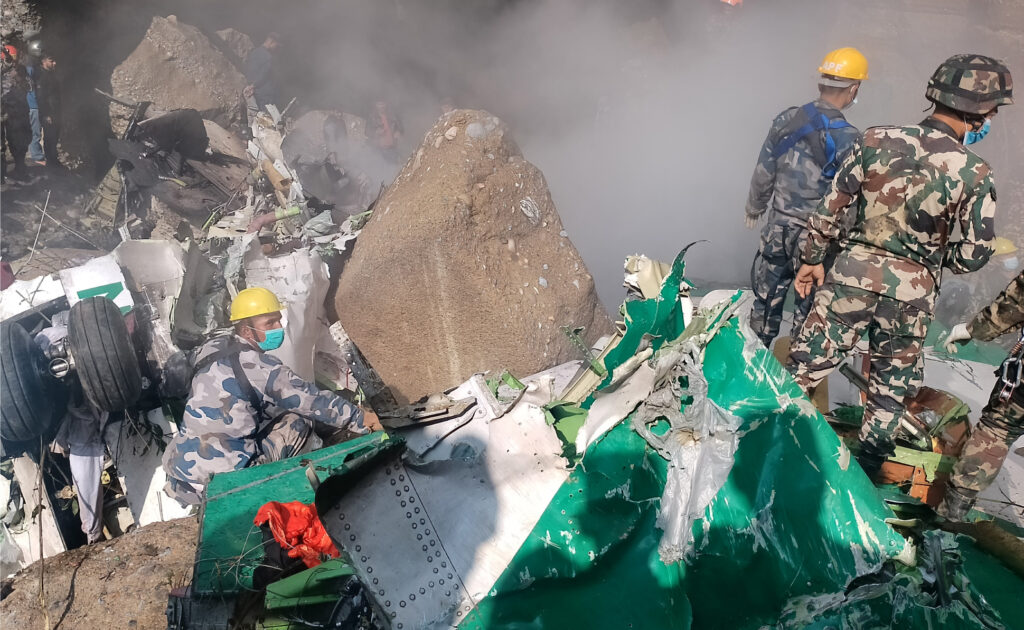Table of Contents
On a day that started like any other, Yeti Airlines Flight 691 took to the skies, unaware of the tragedy that lay ahead. This flight was not just a journey from one place to another; it became a moment in history that would prompt a deep reflection on aviation safety and the precious nature of life. The incident involving Yeti Airlines Flight 691 is a stark reminder of the unexpected challenges and risks in air travel. By exploring what happened, how the world responded, and the lessons learned, we can honor those affected and work towards safer skies for everyone.
The Tragedy of Yeti Airlines Flight 691
Yeti Airlines Flight 691 was a routine domestic flight in Nepal that ended in heartbreak. On its way to its destination, something went terribly wrong, leading to a devastating accident. The specifics of the flight, including its route and what caused the tragedy, are important for understanding the impact of this event.
The aftermath of the crash was a time of confusion and immediate action. Local communities, first responders, and international teams came together in a show of humanity and support. The world watched as efforts were made to assist survivors, recover those lost, and start the process of healing. The response to the tragedy highlighted the global nature of aviation safety and the universal desire to help in times of crisis.
Investigating Yeti Airlines Flight 691
The investigation into the crash of Flight 691 was meticulous and thorough, aimed at uncovering exactly what went wrong. Investigators looked into all possible factors, including mechanical issues, human error, and environmental conditions. The findings of this investigation are crucial for preventing similar incidents in the future.
A technical analysis of the flight’s final moments gives insight into the challenges faced by the crew and the aircraft. This analysis is not just about understanding the tragedy but also about learning how to improve safety measures and pilot training.
In the wake of the crash, there was a renewed focus on aviation safety protocols, especially those concerning Yeti Airlines. Examining the safety measures in place at the time and how they have evolved since can provide valuable lessons for the entire aviation industry.
Impact of Yeti Airlines Flight 691 on Aviation Safety
The most important aspect of responding to any tragedy is learning from it to prevent future occurrences. The lessons learned from the crash of Yeti Airlines Flight 691 have the potential to make air travel safer for everyone. These include enhancements to training, safety protocols, and technology used in aviation.
Following the incident, Yeti Airlines and the broader aviation community took steps to reevaluate and improve safety measures. It’s essential to look at the specific improvements made and how they reflect a commitment to passenger safety.

Remembering the Victims of Yeti Airlines Flight 691
Each person aboard Flight 691 had a story, dreams, and loved ones. Remembering the victims involves not just recounting the tragedy but also celebrating their lives and the impact they had on those around them. Memorials and tributes serve as a reminder of the human cost of aviation accidents.
The crash had a profound impact on families and communities connected to the victims. The support provided to these individuals, from financial assistance to psychological counseling, is an important part of the healing process. It shows the strength of community and the importance of coming together in difficult times.
The Future of Aviation Safety Post-Flight 691
The tragedy of Flight 691 serves as a catalyst for innovation in aviation safety. From new technologies to improved training methods, the aviation industry continues to evolve in its quest to prevent accidents. These innovations not only make flying safer but also reassure the public about the safety of air travel.
Passengers play a role in their own safety, from paying attention to safety briefings to following crew instructions. Awareness and education on the part of passengers can contribute to safer skies for everyone.
Conclusion
The tragedy of Yeti Airlines Flight 691 is a somber reminder of the risks inherent in air travel. However, by examining what happened, understanding the response, and implementing lessons learned, we can honor those who were lost and work towards a future where such tragedies are even less likely to occur. Aviation safety is a collective responsibility, and it is through continuous improvement and dedication that we can look forward to safer journeys ahead.
FAQs about Yeti Airlines Flight 691
What happened to Yeti Airlines Flight 691?
Yeti Airlines Flight 691 was involved in a tragic accident. The specifics include its route, cause, and impact on passengers and crew.
How did the authorities respond to the crash?
Emergency teams, local communities, and international help quickly mobilized to provide rescue, relief, and support to those affected.
What were the key findings from the investigation?
The investigation focused on factors like mechanical issues, human error, and weather conditions to identify the cause and prevent future incidents.
How has aviation safety improved since Flight 691?
Lessons learned led to enhanced safety protocols, better training, and technological advancements in the aviation industry.
How are the victims of Flight 691 being remembered?
Victims are honored through memorials, tributes, and support for their families, highlighting their stories and the impact they left behind.
What role do passengers play in aviation safety?
Passengers contribute to safety by staying informed, adhering to safety briefings, and following crew instructions during flights.

